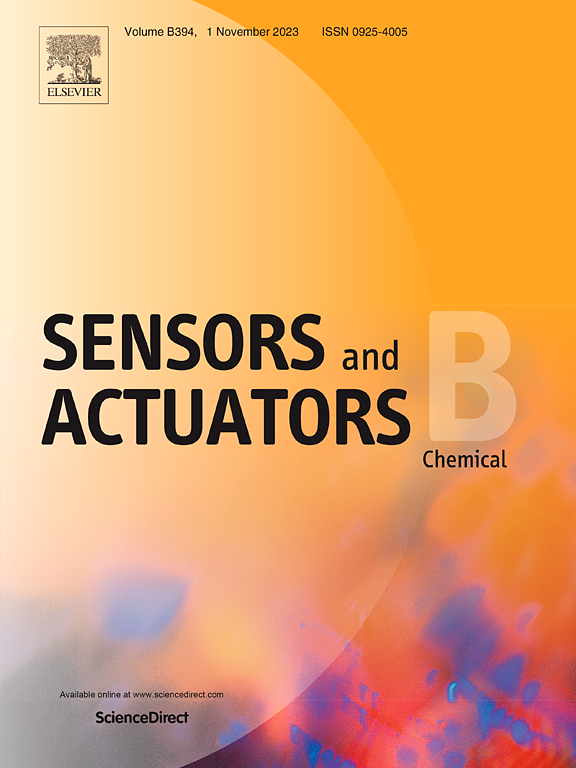H2气体传感器用In2O3/NixOy纳米空腔结构的温度驱动p- to - n型转变
IF 8
1区 化学
Q1 CHEMISTRY, ANALYTICAL
引用次数: 0
摘要
本文主要研究了利用常规模板法合成In2O3/NixOy纳米复合材料。由此产生的气体传感器,专为H2检测而设计,其传感行为依赖于温度。采用各种表征技术对合成的In2O3/NiO复合材料进行了分析。在不同温度下进行的测试结果表明,该传感器在超过240°C的温度下对H2保持稳定的n型响应,而在较低温度下表现出非典型的p型响应。这种吸附行为的转变使In2O3/NixOy复合材料能够作为能够检测H2的双模传感器。温度诱导的转变可能是由几种机制的相互作用引起的。本文通过考察活化能、TGA/DSC、吸附氧、异质结形成和湿度影响等因素来阐明这一现象。本研究有助于理解MOS气敏行为背后的转化机制。本文章由计算机程序翻译,如有差异,请以英文原文为准。
Temperature driven p- to n-type transition of In2O3/NixOy nanocavity structure for H2 gas sensors
This research focused on the synthesis of In2O3/NixOy nanocomposites utilizing the conventional template method. The resulting gas sensor, designed for H2 detection, demonstrates a sensing behavior that is dependent on temperature. Various characterization techniques were employed to analyze the synthesized In2O3/NiO composite materials. The results obtained from tests conducted at different temperatures reveal that the sensor maintains a stable n-type response for H2 at temperatures exceeding 240°C, while exhibiting an atypical p-type response at lower temperatures. This transition in adsorption behavior enables the In2O3/NixOy composites to function as a dual-mode sensor capable of detecting H2. The temperature-induced transformation is likely attributable to the interplay of several mechanisms. This article elucidates this phenomenon by examining factors such as activation energy, TGA/DSC, adsorbed oxygen, heterojunction formation, and humidity effects. This study contributes to the understanding of the transformation mechanisms underlying MOS gas sensing behavior.
求助全文
通过发布文献求助,成功后即可免费获取论文全文。
去求助
来源期刊

Sensors and Actuators B: Chemical
工程技术-电化学
CiteScore
14.60
自引率
11.90%
发文量
1776
审稿时长
3.2 months
期刊介绍:
Sensors & Actuators, B: Chemical is an international journal focused on the research and development of chemical transducers. It covers chemical sensors and biosensors, chemical actuators, and analytical microsystems. The journal is interdisciplinary, aiming to publish original works showcasing substantial advancements beyond the current state of the art in these fields, with practical applicability to solving meaningful analytical problems. Review articles are accepted by invitation from an Editor of the journal.
 求助内容:
求助内容: 应助结果提醒方式:
应助结果提醒方式:


